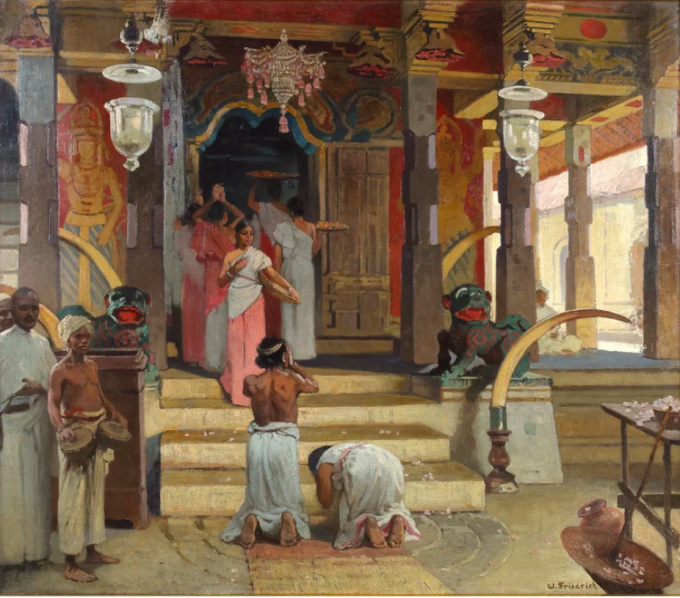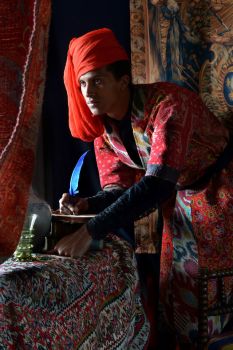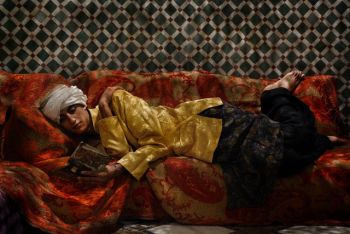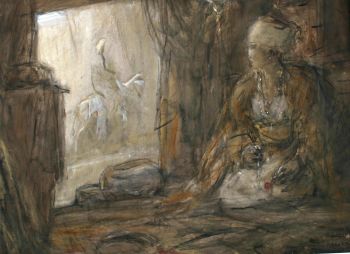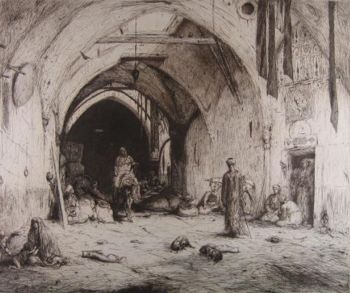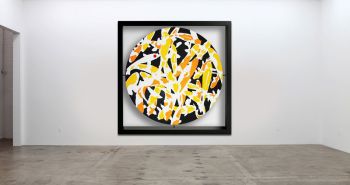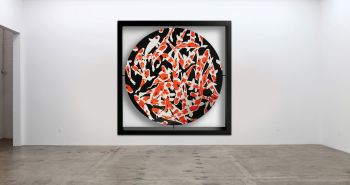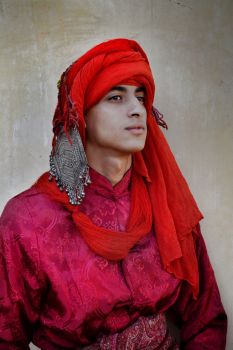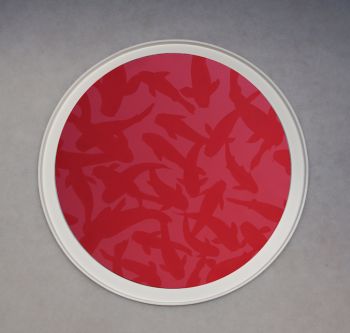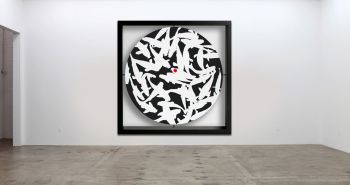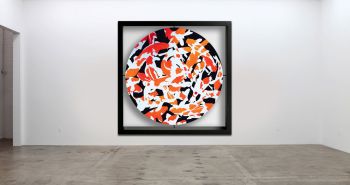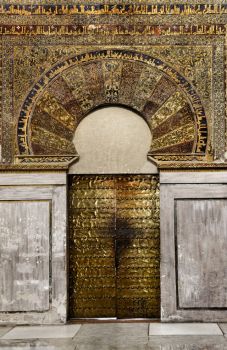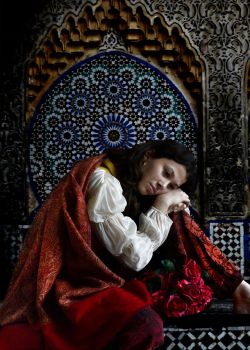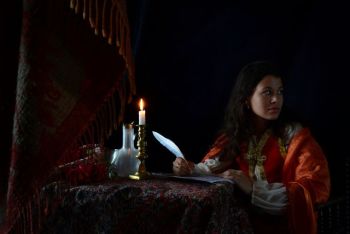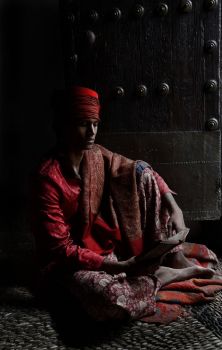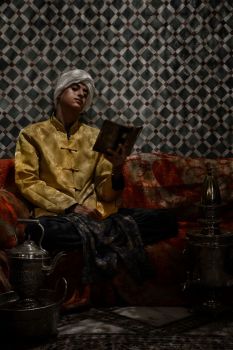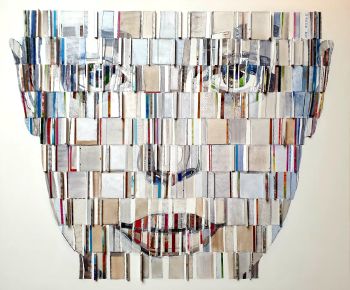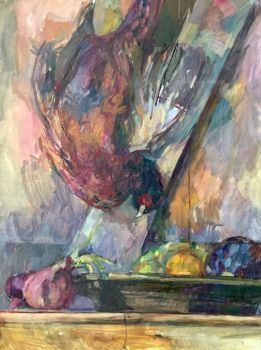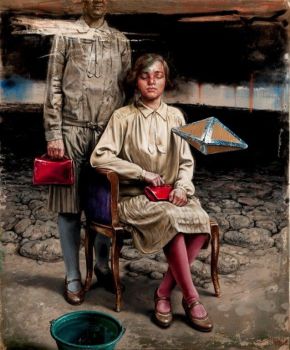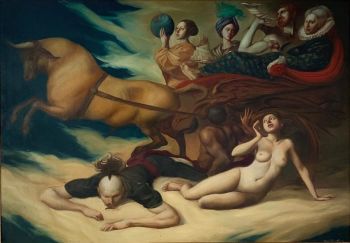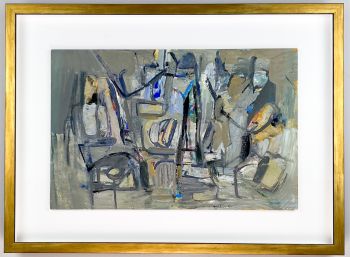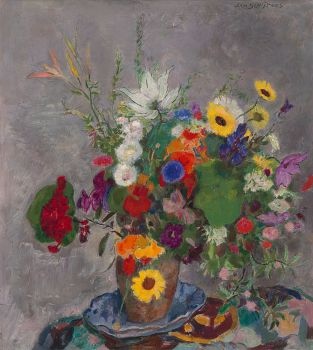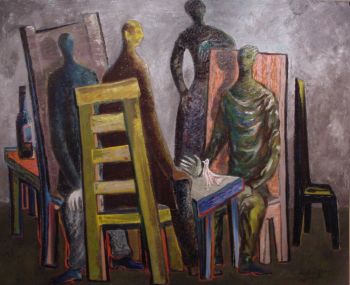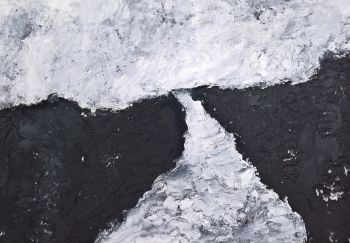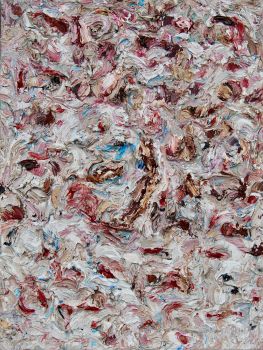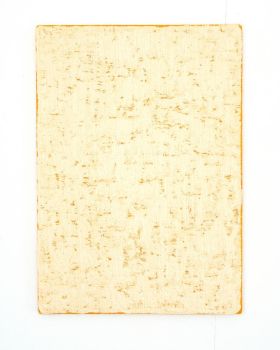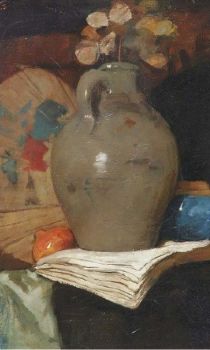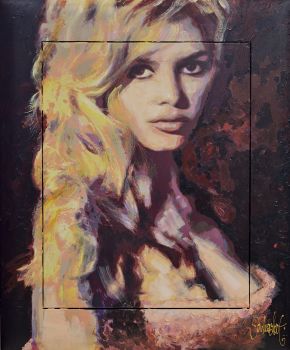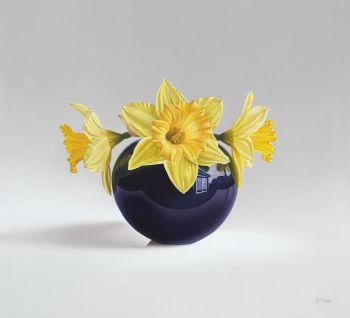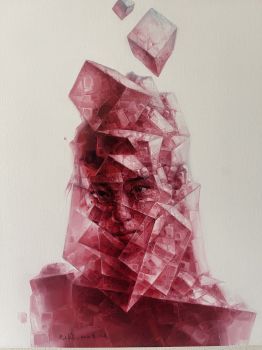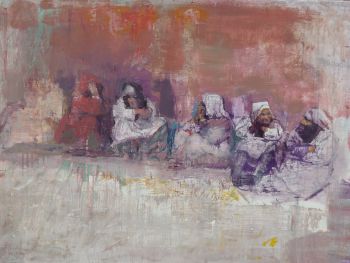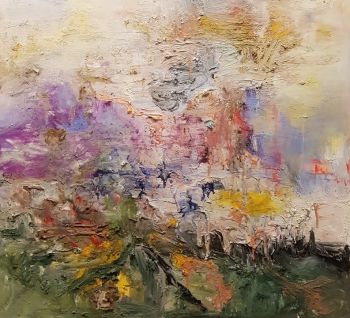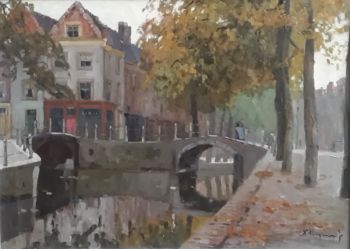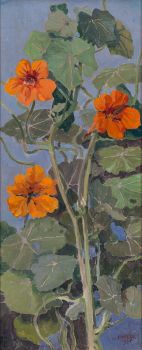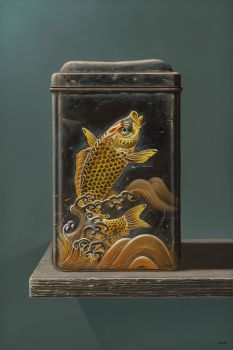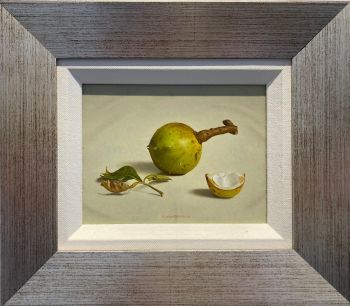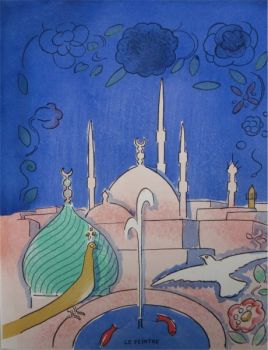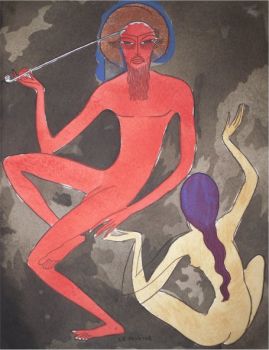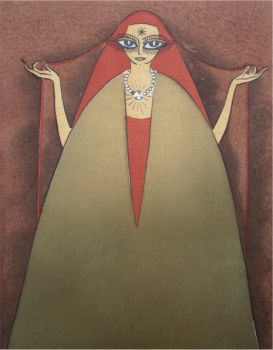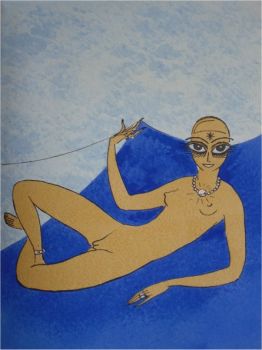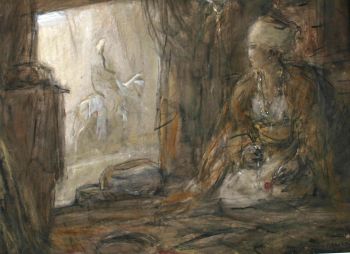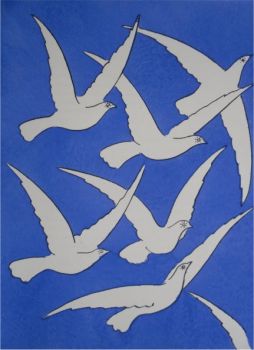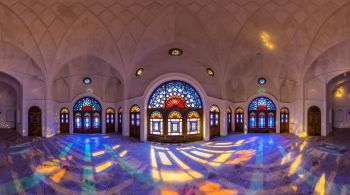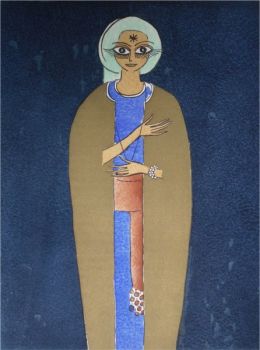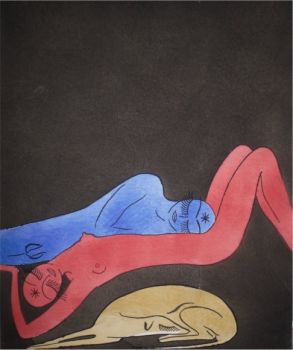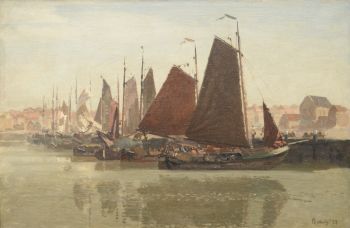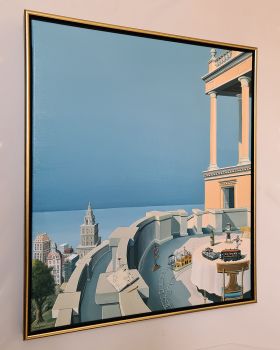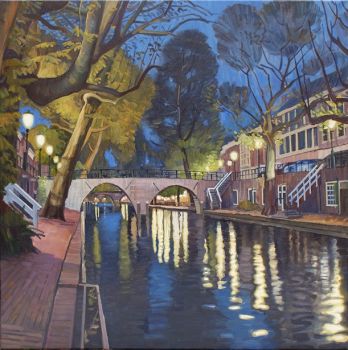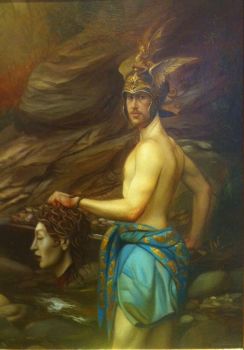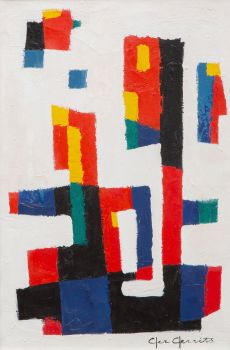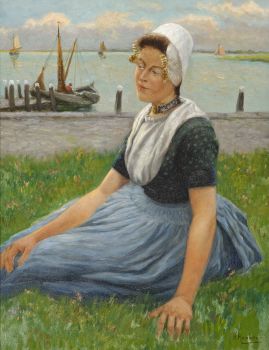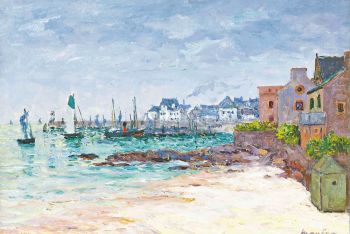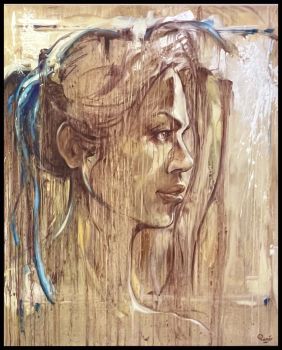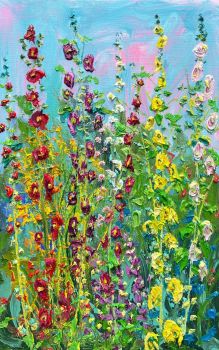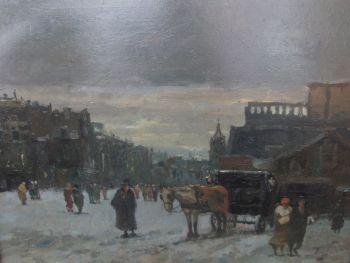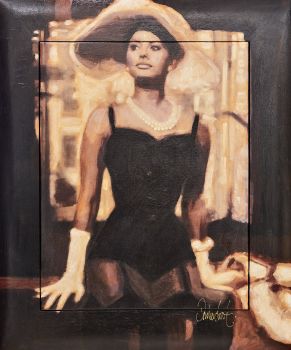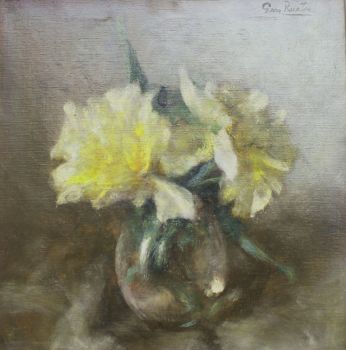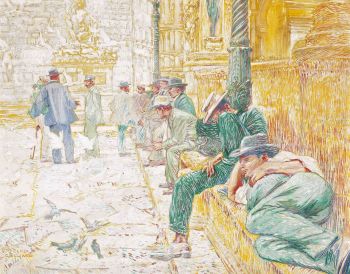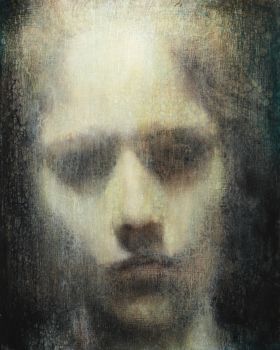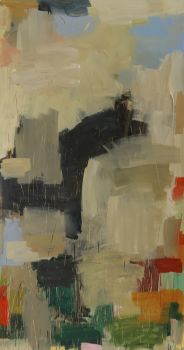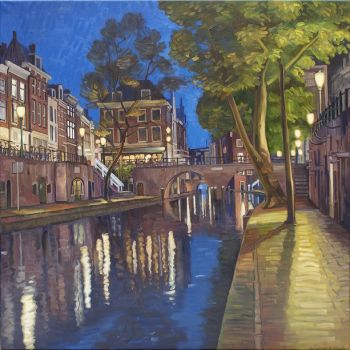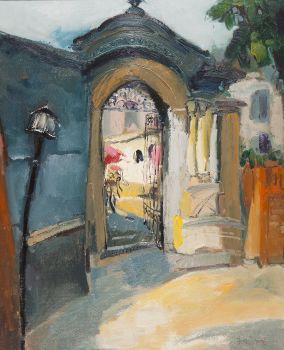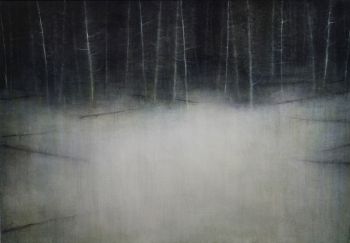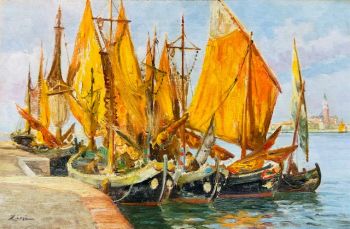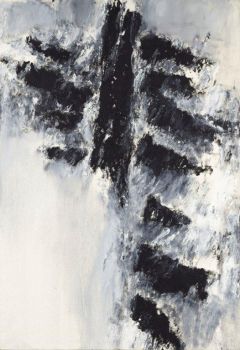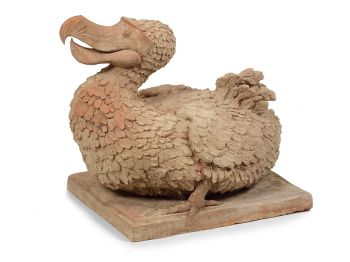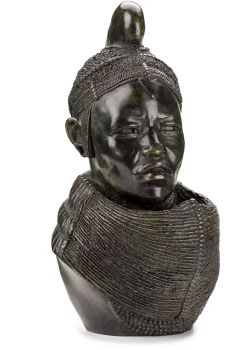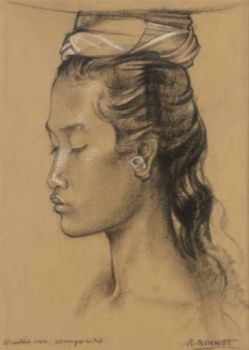‘The Temple of the Sacred Tooth Relic, Sri Lanka’ 1887 - 1888
Woldemar Friedrich
Óleo sobre tela original
80 ⨯ 93 cm
Atualmente indisponível via Gallerease
Zebregs & Röell - Fine Art - Antiques
- Sobre arteWoldemar Friedrich (1846-1910)
Signed bottom right
Oil on canvas, H. 80 x W. 93 cm
The temple, also named Sri Dalada Maligawa, or the Glorious Tooth Temple, is located in the royal palace complex of the former Kingdom of Kandy and houses the relic of the tooth of the Buddha. Since ancient times, the relic has played an important role in local politics because it is believed that whoever holds the relic, holds the governance of the country. The relic was historically held by Sinhalese kings. According to Sri Lankan legends, when the Buddha died in 543 BC, his body was cremated in a sandalwood pyre at Kushinagar. His left canine tooth was retrieved from the funeral pyre by his disciple, Khema.
Woldemar Friedrich is mainly known as a history painter and book illustrator. He studied in Berlin and Weimar where he later became a Professor at the Grand-Ducal Saxon Art School in Weimar in 1881 and also at the Art School of Berlin. In 1887 Herzog Ernst Günther von Schleswig-Holstein invited Friedrich to join him on a trip to India.
During these six month travels he produced a series of paintings and watercolours of the then still exotic oriental world. These were used to illustrate the book Sechs Monate in Indien with text by E. Leipzig and published by Adalbert Fischer in Leipzig in 1893. - Sobre artista
Woldemar Friedrich (20 de agosto de 1846 em Gnadau, Saxônia - 16 de setembro de 1910 em Berlim) foi um pintor e ilustrador histórico alemão.
Em 1863, iniciou seus estudos na Academia Prussiana de Artes de Berlim, com Carl Steffeck. Dois anos depois, foi para Weimar, onde continuou seus estudos com Arthur von Ramberg, Charles Verlat e Bernhard Plockhorst. Durante a Guerra Franco-Prussiana, ele criou ilustrações para a revista semanal da família, Daheim [de] e, depois da guerra, ilustrou Der französische Krieg von 1870/71, de Georg Hiltl [de]. Após uma viagem de estudos à Itália, retornou a Weimar em 1873, onde dividiu seu tempo entre a pintura ilustrativa e a decorativa; notavelmente no Novo Castelo, Hummelshain [de]. Em 1881, ele aceitou uma nomeação como professor na Escola de Arte Grão-Ducal Saxon.
Em 1885, ele foi para Berlim, para ensinar "desenho da vida" na Academia de Artes. Lá ele continuou a fazer trabalhos decorativos, na cúpula do Edifício de Exposições do Estado. Em 1886, ele foi premiado com uma pequena medalha de ouro no Große Berliner Kunstausstellung. Seguiu-se uma viagem à Índia, após a qual produziu uma série de aquarelas e pinturas, bem como um livro ilustrado, Sechs Monate in Indien, com texto de "E. von Leipziger".
Pinturas decorativas posteriores dignas de nota incluem "A Dieta de Worms", no auditório da escola primária em Wittenberg, as pinturas alegóricas na Deutsches Buchhändlerhaus [de] em Leipzig e um mural para o centro comunitário em Niederbarnim, que retrata os cidadãos de Bernau voltando para casa, depois de derrotar os hussitas em 1432.
A partir de 1898, ele foi membro do júri delegado para escolher os designs para os cartões comerciais emitidos pela empresa de chocolate Stollwerck. Seus colegas juízes incluíram Franz Skarbina, Emil Doepler e Bruno Schmitz, que era sócio da empresa.
Ele morreu em Berlim com a idade de sessenta e quatro e foi enterrado no Kaiser-Wilhelm-Gedächtnis-Friedhof em Charlottenburg-Westend. Seu túmulo não foi preservado.
Você está interessado em comprar esta obra de arte?
Artwork details
Related artworks
- 1 - 4 / 21
Cornelis Rudolf Hendrik Spoor
STILLEVEN | JUDASPENNING IN EEN VAAS1867 - 1928
Preço em pedidoGalerie Het Noorderlicht
1 - 4 / 24- 1 - 4 / 24
 Com curadoria de
Com curadoria deDanny Bree
1 - 4 / 24Carlo Bellini
A terracotta sculpture of a dodo20th century
Preço em pedidoZebregs & Röell - Fine Art - Antiques
1 - 4 / 12

